Baby Maybe
Theater for babies? Really? When I first learned of this sub-genre of the TYA field, I responded with the same healthy skepticism I suspect is shared by many theater practitioners, even those, like me, devoted to working for children. That creating plays for preschoolers has been a highly regarded practice across the globe for several decades now seemed as incomprehensible as baby-talk. After all, how could such young children possibly sink their teeth into a play when they’re still cutting them? But the more I learned about the baby brain from recent advances in neuroscience, and of the work of those international practitioners of what is called Theater for the Very Young (TVY) or Theater for Early Learners or just plain Baby Theater, the more the whole thing became both intriguing and alluring.
I now believe that there are many good arguments to be made for writing plays for babies, maybe even better ones than for writing plays for their parents and grand-parents. Firstly, while very young children enjoy art as much as anyone else, part of what early learning is all about is satisfying a need to get in touch with the world. Theater is an opening to do just that. Research has demonstrated that early theater experiences can promote not only language development, but cognitive, social and emotional growth. Little kids also happen to be very good audiences—unconventional, inquisitive, and free of errant notions of what a play ought to be. Barbara Kolling, the Artistic Director of Germany’s Helios Theatre, makes an even more persuasive case. She notes: “If I understand theater as a place created by people to communicate feelings, thoughts, experiences to other people, and where we can all experience ourselves as part of a community, then it is ridiculous to want to be able to exclude anyone...I am more and more convinced…that theater needs two-year olds.” For the producer, there is even the argument to be made that if we start ‘em early enough— get theater into the very fiber of their being— we may ingrain a lifelong habit of theater-going—and ticket buying.
But the more I learned about the baby brain from recent advances in neuroscience, and of the work of those international practitioners of what is called Theater for the Very Young (TVY) or Theater for Early Learners or just plain Baby Theater, the more the whole thing became both intriguing and alluring.
A few years back, I had the good fortune of being invited by Peter Brosius and Elissa Adams of the Children’s Theatre Company (CTC) to join a select group of theater artists, arts educators, and early childhood experts for a series of “convenings” funded by the Bush Foundation. We met to explore approaches to early child development and their application to theater. There were plenty of insightful discussions, experimentation, sharing of work, including that of visiting artist Chris Dahl of Sweden’s Dockteatern Tittut, deconstructing DVDs of other leading international TVY companies and artists, and observations of kids in preschool settings. There was even field work, trying stuff out with very young audiences, an experience that was for me as mortifying as it was edifying. I created two small pieces, one a silent clown piece meant to invoke an empathic response from the tots. For the most part it worked alright, except with one merciless three-year-old heckler who will undoubtedly grow up to be a serial killer, Republican Congressman, or influential theater critic. During my second piece, designed for even greater intimacy, with only fingers and desk-top paraphernalia used to tell a simple story (such as a hole-punch to make paper “snow”), things quickly got out of hand, deteriorating into almost total chaos. Expecting only a handful of kids and finding myself surrounded by several dozen, every time I turned to reach a prop, it would be gone, a new toy already in someone’s eager little grip. I began to long for my simple heckler.
Despite my flailings about, perhaps because of them and the clear need to teach me more, CTC kindly invited me to join fellow conveners, choreographer Ann Carlson, arts-educator Maria Asp, and Elissa at the 2009 biennial International Festival of Theatre and Culture for Early Childhood in Bologna, Italy. There we were immersed in TVY work from plays to workshops to crèche visitations to research presentations to panel discussions to informal talks with artists and scholars from around the world.
Since then, I’ve worked on two very different Baby Theater pieces. The first, Balloonacy, was workshopped by CTC with preschoolers as young as three serving as essential partners in the creative process. We tried a variety of formats for the piece—presenting it over the course of five days, or all in one sitting, and with and without active participation, the former requiring a bit of spoken set-up, though the piece was otherwise entirely non-verbal. This was a deliberate choice. Since early learners come into contact with reality less on a linguistic-discourse basis then on a bodily-sensory basis, TVY work almost demands the use of multiple stage languages beyond the spoken word. Many of the youngsters we worked with had limited English speaking abilities. Among them were recent Hmong and Somali refugee preschoolers and others enrolled in an Ojibwe immersion program on the only urban Native American reservation in the U.S. They were terrific partners, far more so than our balloons (plastic, not latex) which we learned are far more temperamental than any “Terrible Two.” The piece was later invited to the 2012 international Quest Fest Washington, D.C., a festival of “visual theater,” work eschewing the spoken word in favor of physical and visual vocabularies in order to have more universal appeal, specifically to deaf audiences and those facing other language barriers. Seeing the piece performed for incredibly receptive preschoolers from the Maryland School for the Deaf, among other audiences, was deeply gratifying.
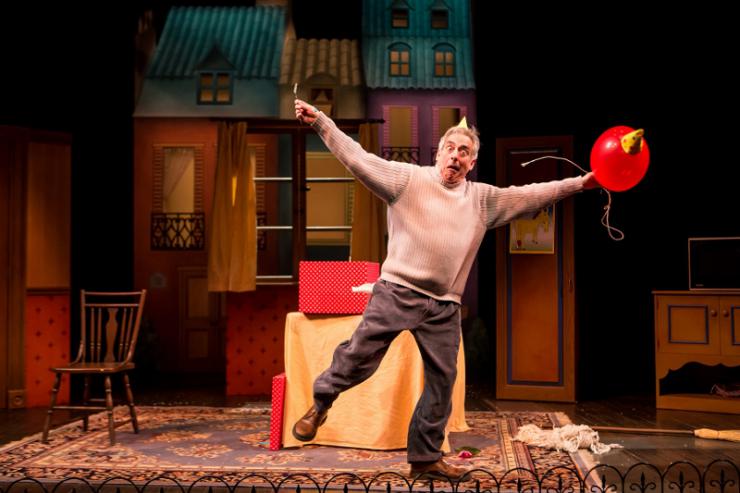
Soon after the CTC workshop, Rosemary Newcott at the Alliance Theatre commissioned me to write a TVY work based on Robert Louis Stevenson’s A Child’s Garden of Verses. This would be the Alliance’s first attempt at Baby Theater. And, of course, very unlike Balloonacy, this would be a play built on words, those from Stevenson’s classic compendium of poems. It would also be highly interactive and multi-sensory. The audience, as young as fifteen months and as small in numbers as in stature (-a recommendation for this type of work), would not just sit and watch, but frequently and actively join the actors in the playing space. In an article about Baby Theater in American Theatre, Rob Weinert-Kendt noted that “children’s theater, particularly for this age, must reckon with the audience’s presence to a degree no other theater must (but maybe should).” Like Patrick Lynch of Lyngo Theatre, I came to look upon our young audience members simply as an extension of our adult cast and an integral part of the production. As a great admirer of the Promenade Theater work of Greg Banks that I’ve seen at CTC, in which audiences are quite literally brought into the performance, I thought of A Child’s Garden of Verses as an opportunity to explore a baby equivalent—call it “Toddle Theater.” Here young audience members would move freely about the stage along with the actors, as well as engage all of their senses, not excluding taste (though finding something for our picnic that was non-allergenic and did not present a choking hazard provided its own challenge; skinless apple slices finally did the trick).
Having never tried anything of this nature before, there was some reasonable apprehension on the part of the Alliance staff. Would we lose control and let the show get away from us? Would the children stay engaged or just go about their own business as we conducted ours? Were there safety issues; would the tykes be in any danger? For that matter, would our props and musical instruments be in any danger from their grabby hands—or hungry mouths? From the first open rehearsal, all of these concerns proved unfounded. The preschoolers were enthusiastic collaborators. Given light blue (shaker) eggs by a robin puppet, for instance, after using them to accompanying a song and dance, the children readily returned the eggs to a nest when it was time for them to hatch. Parents and caregivers were asked if they were anxious or uneasy about their children getting up out of their seats (or, in this case, off of their pillows in our “flowerbeds”). The response was unanimous and unequivocal. This experience was a “gift.” They were absolutely grateful that little Johnny or Quiana didn’t have to sit still and/or stay quiet. And they were enraptured watching their children become players in the play and at having the opportunity to join them in doing so. Still, we did ask the children just to watch now and again (although, while doing so, the wind might softly blow in their faces or a gentle rain sprinkle over them). It was nice to be reminded that children are at times also most willing to sit still and partake quietly, that they have an innate ability to be an audience, an instinct not only to tell stories but to listen to them.
As noted above, I included a hatching of eggs in A Child’s Garden. But discovering TVY presented yet another sort of hatching for me, the birth of a new way of perceiving the very nature of our art. Ute Pinkert, an eminent professor of theatrical pedagogy, suggests that writing plays for preschoolers provides “an opportunity to test our own understanding of theater.” Because it requires a wholly original dramaturgy, Baby Theater is fundamentally “a matter of creating theater anew.” That’s a challenging but exciting prospect.
I love that Balloonacy and A Child’s Garden can be so very different, yet both touch and tickle their intended audiences in their own ways. I love what Tim Webb of England’s Oily Cart describes as the “ingredients” of his company’s Baby Theater work: “Live music, transformed everyday environments, puppets, shadow play, physical comedy, marvelous spectacles, strange contraptions, appropriate subjects and language, changes of perspective, projection, active participation, and relatively frequent changes of focus.” And that’s all within a single production! I love that TVY can offer its audiences a linear storyline or an entirely non-narrative structure, and that both can work beautifully.
Brazilian researchers Ana Luisa Goulart de Faria and Sandra Regina Simonis Richter inform us that “a child understands much beyond what it can say and responds far beyond what it can define…[that] children are capable of sophisticated forms of organization of thinking, and of manifesting different manners of expression, even prior to reading and writing.” So there is an imperative to create works that “encourage imagination and challenges to reasoning, giving room to curiosity, providing amazement, discovery, marveling all form of expression in the most varied intensities.” Devising such work is complicated business to say the least, nothing anyone could deride as “baby stuff.”
The process of exploring how a moment or a sound or an object or an action becomes meaningful and engaging to very young children can take a playwright on a very interesting and, in many ways, liberating journey, one where we welcome the littlest audiences to be our travelling companions—and guides. Embarking on such an artistic venture is an excellent way of freeing ourselves from the confines of complex and learnt intellectualizations. In other words, doing so invites us to, yes, think like a baby. And maybe, just maybe, by being open to possibilities and free of preconception, our art will grow just as surely as babies will one day grow up.

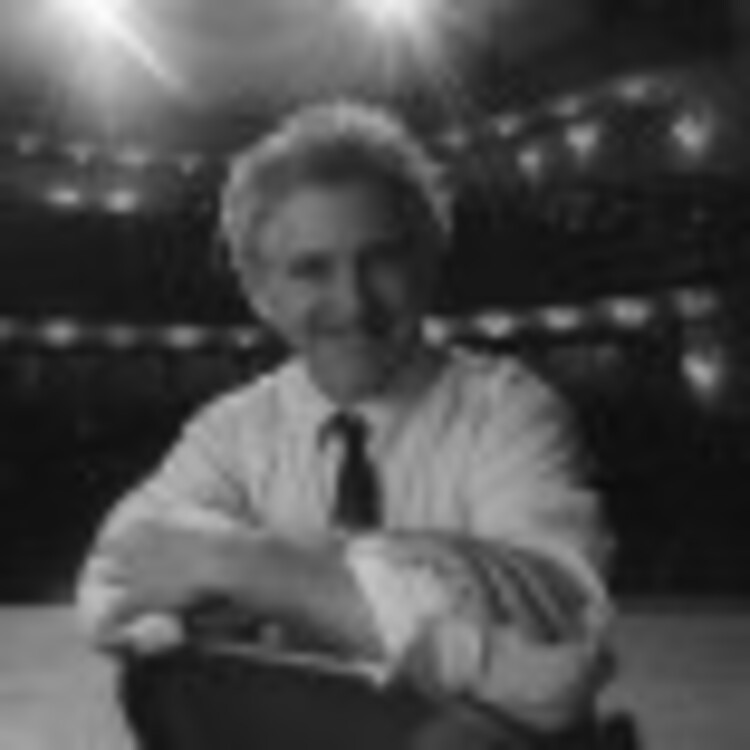
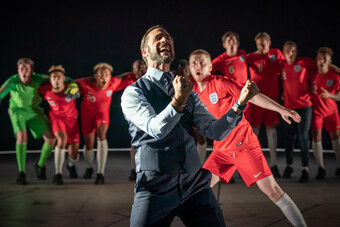

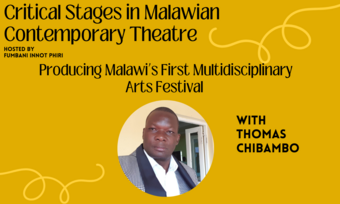


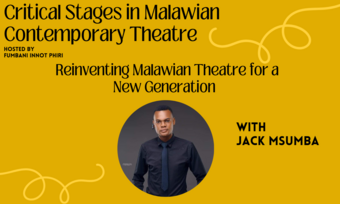

Comments
The article is just the start of the conversation—we want to know what you think about this subject, too! HowlRound is a space for knowledge-sharing, and we welcome spirited, thoughtful, and on-topic dialogue. Find our full comments policy here
I was thinking about creating baby theatre before I realized it was already a thing. As an actor/teacher/playwright/stay-at-home-mom, I found myself finding ways to entertain and engage my 1 year old and then day dreaming about making them a little larger scale. I love all the possibilities of the form and audience.
When I taught pre-school creative drama, I found myself considering the essence of theatre - how could I teach listening in a creative way, how could i teach presence in a creative way. I think baby theatre might ask the same kinds of questions. Wouldn't think exploration into our art form make us all richer artists?
I also think, watching my own baby and his baby friends, that babies are clowns. They fail constantly and with a smile. They get up, try again, fall down, and laugh the whole time. We may have something to learn about our art form from just watching them.
"An opportunity to test our own understanding of theatre." That statement resonates because I did think TVYA was beyond me - but in that perspective - it fascinates. Your 3-year-old heckler - just might be the biggest loud-mouth support of TVYA and TYA in the future.